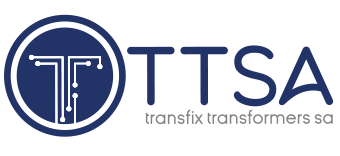Engineering News editor Terence Creamer talks about amendments made to the request for proposals for the procurement of 2 000 MW of gas to power and what these changes mean for the programme and potentially for tariffs?
Renewable energy developer Seriti Green on November 26 officially handed over the Vunumoya Main Transmission Station (MTS) to State-owned power utility Eskom. The infrastructure will now become an asset of Eskom subsidiary the National Transmission Company South Africa (NTCSA).
The Energy Regulator, which is the National Energy Regulator of South Africa’s (Nersa’s) highest decision-making body, has made three landmark decisions in support of the country’s legislated commitment to transition to a competitive electricity market from one historically monopolised by Eskom. At its meeting on November 27, it approved the granting of a Market Operator licence to the National Transmission Company South Africa (NTCSA), a precursor to the launch of the South African Wholesale Electricity Market (SAWEM) in 2026, alongside new Grid Capacity Allocation Rules to facilitate fair and non-discriminatory access to the network.
Fund manager the Public Investment Corporation (PIC) has approved a landmark Strategy on Natural Gas, marking a pivotal step towards bolstering South Africa’s energy security and accelerating the country’s decarbonisation agenda. The strategy is engineered to help secure a stable gas supply, directly supporting South Africa’s critical transition towards cleaner energy sources, it says.
The Copper Mark and the Solar Stewardship Initiative (SSI) have signed a memorandum of understanding that establishes a framework for collaboration aimed at promoting responsible production and sourcing of copper across the solar energy value chain. The organisations said on November 27 that copper was a major component in solar energy generation and transmission and that rising demand for renewable energy was increasing the need for cooperation between stakeholders involved in copper mining, processing and manufacturing.
Significant amendments to the request for proposal (RFP) documentation for South Africa’s much-delayed procurement of 2 000 MW of gas-to-power capacity have been unpacked, including an updated fuel pricing formula and an increase in the minimum load factor to 50% for the 20-year duration of the power purchase agreement. Independent Power Producer Office (IPPO) head Precious Edward also used a virtual briefing on the Gas to Power Independent Power Producer Procurement Programme, or GASIPPPP, to reaffirm government’s commitment to the new bid submission deadline of May 29, 2026 – this, for a programme initially launched on December 14, 2023, with an August 30, 2024, deadline.
Cape Town-based independent power trading company Enpower Trading has become the first private South African-incorporated company to secure conditional market participant membership from the Southern African Power Pool (SAPP).
The conditional market participant membership allows Enpower to transact across SAPP’s regional platform, enabling both cross-border electricity imports and exports, and sets the stage for a more dynamic and competitive Southern African energy market.
Global crane rental, heavy lift and engineered transport group Sarens has highlighted the capabilities of its training centre in Cape Town, the Sarens Academy South Africa, particularly its focus on developing the skills required by the country’s, and the region’s, growing wind power sector. The wind power training and skills development courses provided by the academy are aligned with the standards of the Global Wind Organisation (GWO). “The wind industry in South Africa will generate between …
State-owned utility Eskom has confirmed the successful resolution of a long-standing commercial dispute that began in 2022, with the Stefanutti Stocks Basil Read (SSBR) joint venture (JV) relating to the buildings contract at the Kusile power station, in Mpumalanga. The resolution follows the completion of the formal Dispute Adjudication Board (DAB) process for Claim 5, which is a standard mechanism used on large infrastructure projects to resolve complex contractual claims.
Japan is in talks with South Africa over potentially helping the country finance the reorganisation of its energy sector. The funding, if implemented, would add to the as much as $150-million lent to the state-owned Development Bank of Southern Africa by Japanese institutions late last year for the funding of renewable energy projects.
INDUSTRY NEWS
- NERSA appoints Electricity Market Advisory Forum to guide power-market reformDecember 19, 2025 - 2:04 pm
- Eskom offers more details on envisaged roles of the NTCSA and the TSODecember 18, 2025 - 11:04 am
- NTCSA says any electricity deal to salvage Mozal must ensure its financial sustainabilityDecember 17, 2025 - 3:01 pm
WHERE TO FIND US
Address
9 Yellow Street
Botshabelo Industrial Area
Botshabelo, Free State
Call / Email Us
Tel: +27 (0) 61 956 6772
Email: info@transfix.co.za
